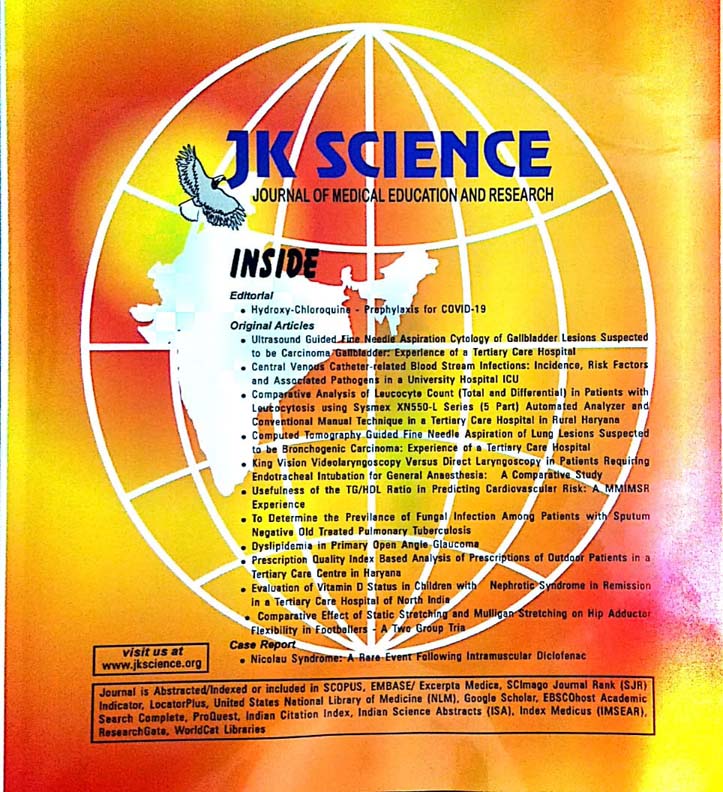"Catch Them Young" - Neonatal Screening for Hearing Loss, A Hospital Based Study
Keywords:
Neonatal Hearing Loss, Neonatal Screening, Otoacoustic Emission, BERAAbstract
Background: Neonatal hearing loss is more prevalent than other routinely screened new-born disorders like congenital hypothyroidism. Auditory deprivation during early phase of life causes developmental disorders with poor language, speech & education leading to lack of job opportunities and financial dependence. Early diagnosis is essential for suitable auditory rehabilitation of such children. Any delays in detection of hearing loss ensure an inferior quality of rehabilitation and a handicap for life.
Objectives: To find the incidence of hearing loss in neonates, compare the incidence of hearing loss in the "at risk" & "not at risk" neonates and to document the risk factors associated with neonatal hearing loss.
Methods: A prospective study was carried out where neonates underwent a two-step screening with OAE and BERA as per JCIH guidelines.
Results: Overall incidence of neonatal hearing loss was 2.85%, incidence being higher in the "at risk" group babies (4.80%). A statistically significant association between the presence of risk factors and hearing loss was observed, p <0.05.
Conclusion: Universal neonatal screening for hearing loss in all new-borns will ensure the inclusion of apparently normal neonates who form a large chunk of the "invisible burden of hearing impairment".
Downloads
Downloads
Published
How to Cite
Issue
Section
License
Copyright (c) 2023 JK Science: Journal of Medical Education & Research

This work is licensed under a Creative Commons Attribution-NonCommercial-ShareAlike 4.0 International License.





